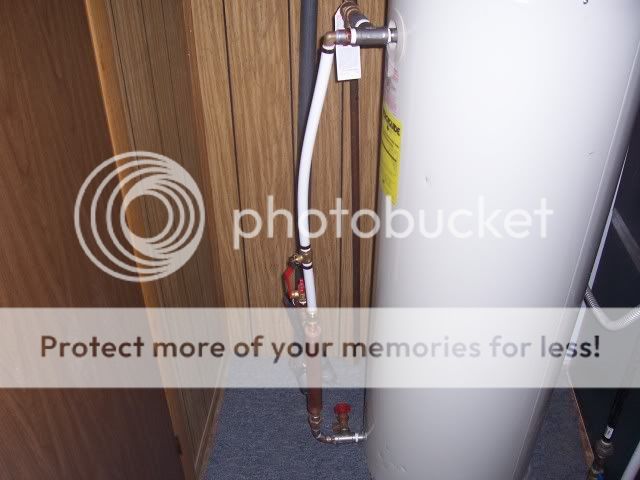PA Plumber
Addicted to ArboristSite
OK now what about this little guy. How do I keep this in the system and add a line to the same area for circulation?

Disclaimer: I have never installed a circulating loop for this type of application. Anything written here is not meant as professional plumbing advice. The following post is for "sake of discussion" purposes only.
"This little guy" should stay right there. I would install a piece of pex, cpvc, or copper to get the T&P blow off 2" - 4" off of the finished floor.
Install a check valve on the cold line into a tee and tie that into the water heater cold inlet. The check will keep the recirculated hot water from going into the domestic cold.
Install another tee on the hot outlet side of the water heater.That should give you a loop without messing with the T&P and the drain at the bottom of the unit.
Now remember, this loop with be "closed." There will need to be provision made for thermal expansion in this closed loop. I like a 4.4 gallon expansion tank for this. Set the tank pressure at whatever the house pressure is set at.
I.E. Public water pressure is 64 lbs coming into the house. Charge the expansion tank to 64 pounds and check it at least annually.
I.E. Well with pressure tank. Match the high(cutoff) side of the pressure switch. 30/50 or 40/60 switch, just use 50psi in the expansion tank, or 60psi respectively.
If I'm way off base here folks, just say and I won't post another word on this thread.

























































